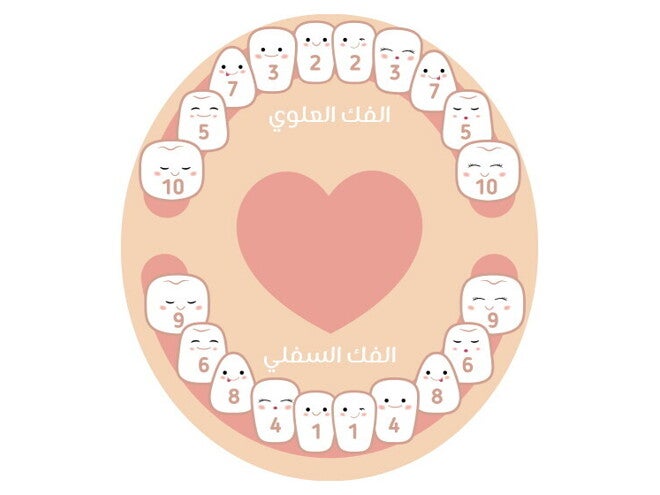
Teething Chart For Babies
The teething stage is one of the natural and important milestones in a child's growth, as the first teeth begin to appear gradually, signalling the start of a new phase in their development and overall well-being. Although this period can be full of challenges, it also carries unforgettable special moments that strengthen the bond between parent and child through shared care, attention, and love.
In this article, we will review the teething schedule for children, which outlines the timing of teething onset and its different stages, along with common symptoms, useful tips, and available treatments that can ease the process. By understanding this schedule thoroughly and recognizing its importance, parents can better prepare for this stage and help their children overcome any potential difficulties with patience, love, and care. Keep reading to discover valuable information about teething and how to support your child during this crucial and memorable developmental period with confidence.
When Does Teething Begin in Children?
Teething begins in most children between the ages of 4 and 7 months, but this timing may vary from one child to another based on genetic, nutritional, and developmental factors. Some children may get their first teeth early, while others may experience a delay until they are around one year old or slightly older. Mothers and caregivers need to monitor their child's growth stages and be aware of the early signs of teething, as early attention can help ease discomfort.
Teething symptoms appear gradually and differ from one child to another, but they often include increased drooling, swollen gums, and a constant desire to chew on objects like toys, fingers, or household items. The child may also experience sleep disturbances and become more irritable than usual, indicating that the first teeth are about to emerge and marking the beginning of a new phase in their development and oral health journey.
Baby teeth start appearing gradually, with the central incisors emerging first, followed by the lateral incisors and premolars, usually in symmetrical pairs. By the age of three, the primary teeth are fully developed, paving the way for permanent teeth to appear in the following years. Therefore, it is essential to care for a child's dental health from the beginning by using products specifically designed to protect their teeth, strengthen enamel, and promote healthy growth and hygiene habits early on.
Stages of Teething in Children
The teething journey usually begins in most children around the age of 6 months when the first teeth start to emerge gradually and gently. However, the timing of teething can vary from one child to another depending on several individual and developmental factors. Some teeth may appear as early as 4 months, while others may experience a delay until 12 months or slightly later. Therefore, it is important for mothers to closely monitor this stage to recognize teething signs early and prepare accordingly with care and patience.
Stage | Type of Teeth | Age Range | Description |
Stage 1 | Central Incisors | 6 to 10 months | The first teeth to appear are usually the lower central incisors. |
Stage 2 | Lateral Incisors | 9 to 16 months | The upper and lower lateral incisors follow, helping the child chew better. |
Stage 3 | First Molars | 12 to 18 months | The back molars begin to appear, allowing the child to grind food more efficiently and gradually facilitating the chewing process. |
Stage 4 | Canines | 16 to 23 months | Canines emerge between the incisors and molars, helping the child tear food and improve their ability to eat solid foods. |
Stage 5 | Second Molars | 24 to 30 months | The last set of baby teeth, completing the child’s full set of primary teeth. |
Stage 1
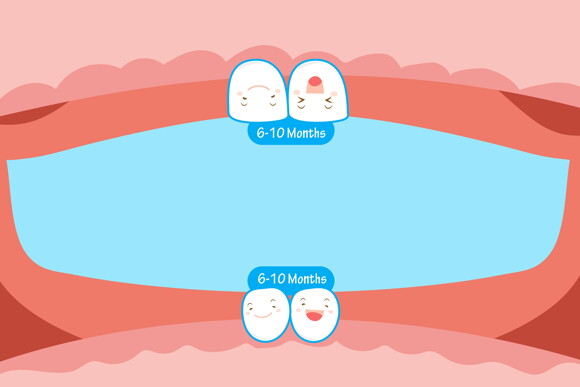
Stage 2
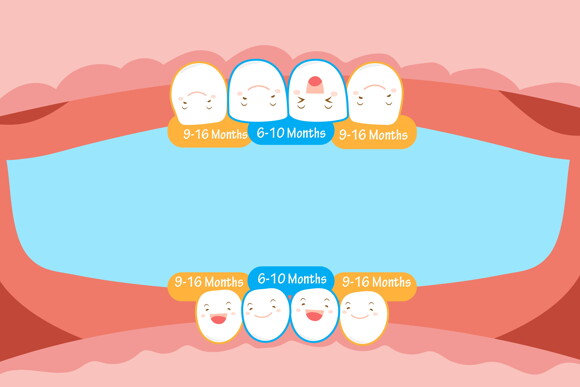
Stage 3
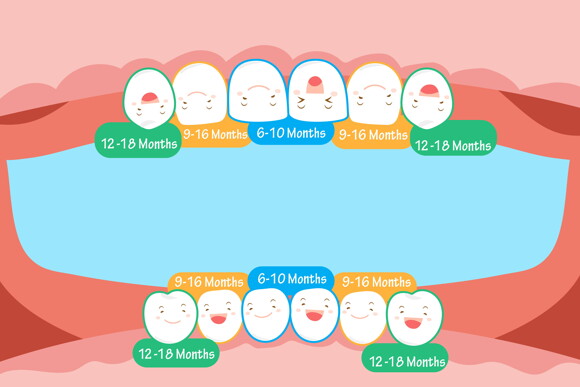
Stage 4
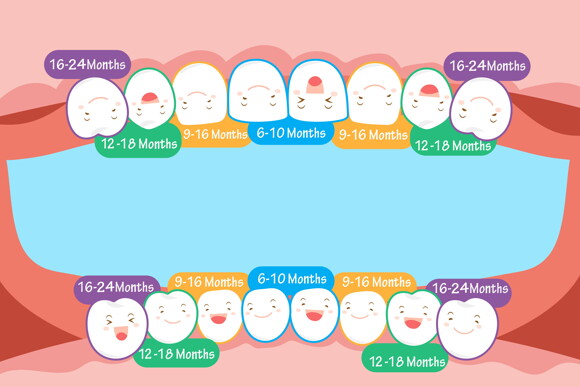
Stage 5
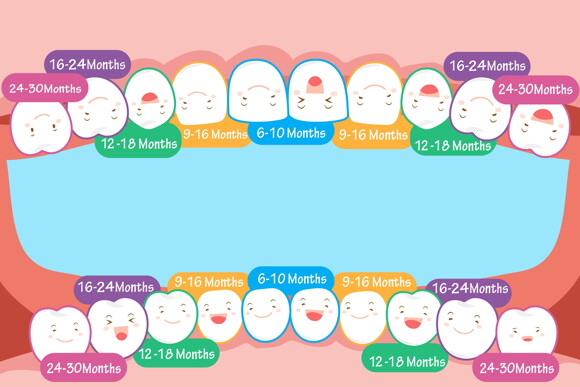

The order in which teeth appear in children follows a sequential pattern that is generally consistent. The central incisors emerge first, followed by the lateral incisors, then the molars and canines. Typically, the first molars appear between 12 and 18 months, and the full set of baby teeth is complete by the age of three years. This clear sequence helps mothers anticipate the teething stages and provide the necessary care, attention, and comfort for their children throughout each phase.
Although teething is a natural process, it can cause some common issues such as pain and irritation in the gums. The child may also experience a mild fever or loss of appetite due to discomfort and increased sensitivity. Therefore, mothers need to be aware of these symptoms and offer proper care and emotional reassurance. Child-safe pain relievers or teething toys can help alleviate discomfort, making this phase more manageable and less stressful for both children and their mothers.
Teething in Children: Symptoms and Treatment
Teething is a natural stage in a child’s growth, but it may be accompanied by several bothersome symptoms that can affect both the child and the parents. Among the common symptoms, a child may experience excessive drooling, gum irritation, loss of appetite, and difficulty sleeping or napping during the day. Other signs may include frequent crying or general discomfort, especially during the evening or nighttime when pain may feel more intense. These symptoms are part of the body’s natural response to the eruption of teeth through the gums.
To relieve teething pain, parents can use several effective methods. One of these methods is gently massaging the child's gums with a clean finger, which helps soothe the pain and stimulate circulation. Teething rings can also provide gentle pressure on the gums, reducing discomfort and keeping the baby engaged. Additionally, offering cold foods, such as frozen fruit pieces, chilled yogurt, or cold teething toys, can help soothe the gums and ease pain in a safe and natural way.
There are also some natural remedies that may help relieve teething pain. For example, chamomile tea is known for its calming properties, which may help reduce fussiness, while coconut oil has antibacterial properties that help maintain oral hygiene and reduce inflammation or minor irritation. However, it is always advisable to consult a pediatrician before trying any new treatment or home remedy to ensure the child's safety and avoid unwanted side effects.

